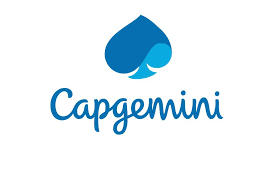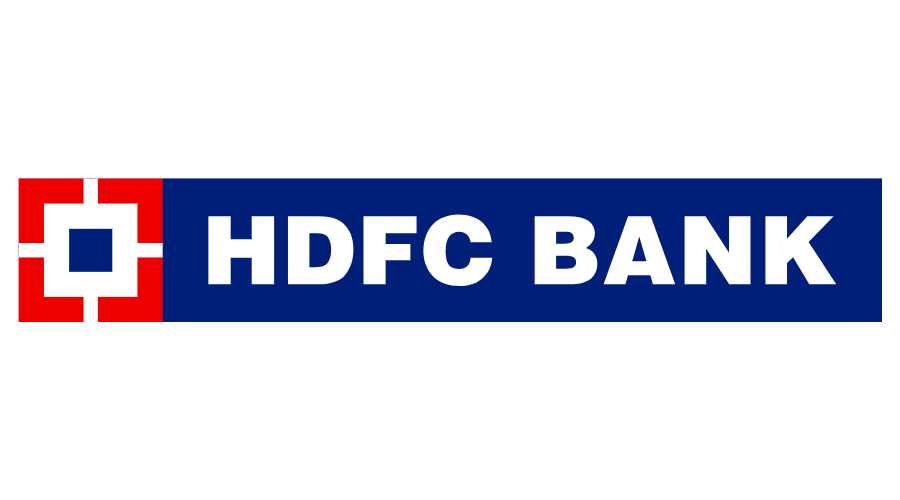The Complete Dummies Guide to Microsoft SQL Server
Beginner to Advanced Guide to Learn SQL with Microsoft SQL Server. Covering All Basics to Advanced with Examples

Lectures -60
Duration -7.5 hours

30-days Money-Back Guarantee
Get your team access to 10000+ top Tutorials Point courses anytime, anywhere.
Course Description
Hello, and welcome to my new course 'The Complete Dummies Guide to Microsoft SQL Server'.
You already know that in this information technology age 'data' is everything. And a Database is the place where this information is stored in tables. There are two types of databases. A structured database and also there is un-structured or no-SQL kind of database. We will see the SQL or the Structured Query kind of database. And the most popular one among the SQL databases is the Microsoft SQL Server.
Here is an overview of the sessions that are included in this course.
In the first session, we will have an introduction to databases. Then we will see the concepts of SQL or Structured Query Language which is used in RDBMS.
Then we will see different types of SQL commands. Then the database objects And in the next session, we will move on to the basics of the MSSQL server. We will see how we can install the free version or the express edition of Microsoft SQL server into your computer and then we will download the Microsoft SQL Server Management Studio, which is a tool and an interface. And later we will connect SQL Server Management Studio with our MSSQL Server process that is running in the background.
And then we will proceed with the basic SQL database operation. We will create a database, we will list the database in the server, then can select a database using the USE command, and finally will try demonstrating deleting a database using the DROP command. There is also an option to take a backup of the database.
And then we will move on with SQL basic table operations. We will have an overview of the data types of SQL. Then we will have an overview of different SQL constraints and the difference between a primary key and a foreign key. And finally, we will start creating a table in our database. We will create it, we will try to delete it. We will try to alter it. And then we will move on to describing the table schema and inserting data into the table. Deleting data from the table, modifying data, then.. fetching the data all these basic table operations will be dealt with in this session.
And then we will go ahead and import a sample database. It's a free sample database called the Northwind Traders database from Microsoft. We will download it and we will import that into our SQL server. Later we will proceed with the basic aggregate functions of SQL. We will see what is an aggregate function and then we will proceed with each and every aggregate function.
And then we will proceed with the basic clauses of SQL. We will see what is a clause and different
clauses. The first is the Distinct clause, Group-by, Where clause, then Order-by, Having clause, Select, and Grouping sets. We will also have different examples for each and every clause that we learn. Then we will proceed with the basic operators of the SQL server. The basic operators include Comparison operators Union operators, Intersect, In operator, Not, Between, Is Null, and Not Null. Then we have the Like, Exists, operator. We will try different examples.
Then we will have an elaborate session with the SQL server data types. The popular ones. Then we will have a detailed session regarding the constraints in the SQL server. The constraints include the Primary key, then the Foreign key, Check then Unique then Default, and Not Null constraints. The relationship between these tables and its columns is defined using a standard notation called as the ER or Entity Relationship diagram. We will see what is an Entity, then we will see what is an Attribute, and also what is the relationship in the ER diagram.
And then we will proceed with the popular string functions or string manipulation functions in the SQL server. These functions we can use to process a string inside our SQL server. We will also have an overview of the popular SQL Date and Time functions which are used to manipulate date and time data inside SQL servers. And then we will proceed with the popular SQL mathematical operations. And also examples for demonstrating all these functions then we will proceed with the SQL conversion functions which are used to perform data conversion inside SQL. We will try examples for these functions.
And then we will move on to an important topic called as SQL Joins. This join clause in SQL will enable us to connect between different tables which is linked by some common key. The popular ones are Inner join, Outer join, then Cross Join and Self Join We will see detailed examples, and demonstrations for each of these joins and then we will proceed with Stored Procedures in SQL server. A block of re-usable SQL statements that are stored in the Server.
We will see an overview about the stored procedure. Then we will see how we can create a stored procedure. Then execute then how we modify, and delete the stored procedure and also we will see how we can pass input parameters into. Return the processed parameters from the stored procedure.
And then we will see what is a sub-query inside SQL server. We will see an overview of the sub-query. We will try different examples of how we can create a sub-query. And then we will proceed with Views in SQL server. We will see an overview of the views in SQL. Then, how we can create a view? We will try an example and how we can call the already-created view. And then we will move on with SQL server triggers. Different types of SQL triggers. DDL trigger, and the DML trigger, are the two types of DML triggers. We will try them with examples.
And then we will see what is a transaction in an SQL server. We will discuss the two states of transactions. We will explain it with the help of a bank ATM scenario and we will try examples of committing a transaction. Rolling back the transaction, the SQL transaction in case of an error. And then we will proceed with the normalization of the table which is used to keep everything in order inside the database. We will see what is normalization in DBMS. We will see different types of normalization. Then we will be proceeding with the backup and restore of the database. We will see how we can back up a database. Save that into our computer and then later we can use that backup to restore that database.
And in the final session, we will be discussing how we can secure a database. We will use an inbuilt tool to access the different security risks and the preventive measures that we can take. The steps that we can follow to fix those security risks and finally about the SQL injection technique that hackers use. We will see a few demonstrations of how a hacker can include an SQL injection statement into our SQL server and get the data he wants.
And that's all about the topics which are currently included in this quick course. The sample database and the materials have been uploaded and shared in a folder. I will include the link to download them in the last session or the resource section of this course. You are free to use that with no questions asked.
Also, after completing this course, you will provide with a course completion certificate which will add value to your portfolio.
So that's all for now. See you soon in my classroom.
Happy Learning !!
Goals
Learn Microsoft SQL Server Database Management
SQL commands and SQL Server Management Studio UI
Start from the basic to advanced MSSQL database
Combining both SQL commands and MSSQL UI
Prerequisites
- Computer which can install MSSQL Server and MSSQL Studio. Your Laptop or PC will be fine.

Curriculum
Check out the detailed breakdown of what’s inside the course
Course Introduction and Table of Contents
1 Lectures
-
Course Introduction and Table of Contents 08:59 08:59
Introduction to Database and Database Management Systems
1 Lectures

Introduction to RDBMS and NonRDBMS
1 Lectures

Types of SQL Commands
1 Lectures

Installing MSSQL
1 Lectures

Basic DB Operations
2 Lectures

Basic Table Operations
4 Lectures

Sample Databases Import
1 Lectures

Aggregate Functions in MSSQL
2 Lectures

Clauses in MSSQL
3 Lectures

Grouping Sets Clause
2 Lectures

SQL Basic Operators
2 Lectures

Union and Intersect operators
1 Lectures

Popular Datatypes Introduction
2 Lectures

Popular Datatypes Example
1 Lectures

Constraints - Primary Key
2 Lectures

Constraints - Foreign Key
2 Lectures

NOT NULL and UNIQUE constraints
2 Lectures

CHECK and DEFAULT constraints
2 Lectures

ER Diagram Overview
1 Lectures

SQL Popular String Functions
2 Lectures

SQL Popular Date Functions
2 Lectures

SQL Popular Mathematical Functions
1 Lectures

SQL Popular Convert Functions
1 Lectures

Joins - Introduction and Table Preparation
3 Lectures

Inner Join
1 Lectures

Outer Join
1 Lectures

Self Join
1 Lectures

Cross Join
1 Lectures

Stored Procedure Basics
2 Lectures

Stored Procedure Passing Parameters and Return
1 Lectures

SQL SubQueries
1 Lectures

SQL Views
1 Lectures

SQL Triggers - DDL Triggers
1 Lectures

SQL Triggers - DML Trigger
2 Lectures

SQL Transactions
2 Lectures

Normalization
1 Lectures

DB Backup and Restore
1 Lectures

Securing the Database
1 Lectures

Instructor Details

Abhilash Nelson
I am a pioneering, talented and security-oriented Android/iOS Mobile and PHP/Python Web Developer Application Developer offering more than eight years’ overall IT experience which involves designing, implementing, integrating, testing and supporting impact-full web and mobile applications.
I am a Post Graduate Masters Degree holder in Computer Science and Engineering.
My experience with PHP/Python Programming is an added advantage for server based Android and iOS Client Applications.
I am currently serving full time as a Senior Solution Architect managing my client's projects from start to finish to ensure high quality, innovative and functional design.
Course Certificate
Use your certificate to make a career change or to advance in your current career.

Our students work
with the Best


































Related Video Courses
View MoreAnnual Membership
Become a valued member of Tutorials Point and enjoy unlimited access to our vast library of top-rated Video Courses
Subscribe now
Online Certifications
Master prominent technologies at full length and become a valued certified professional.
Explore Now


 Updated on Jun, 2024
Updated on Jun, 2024
 Language - English
Language - English